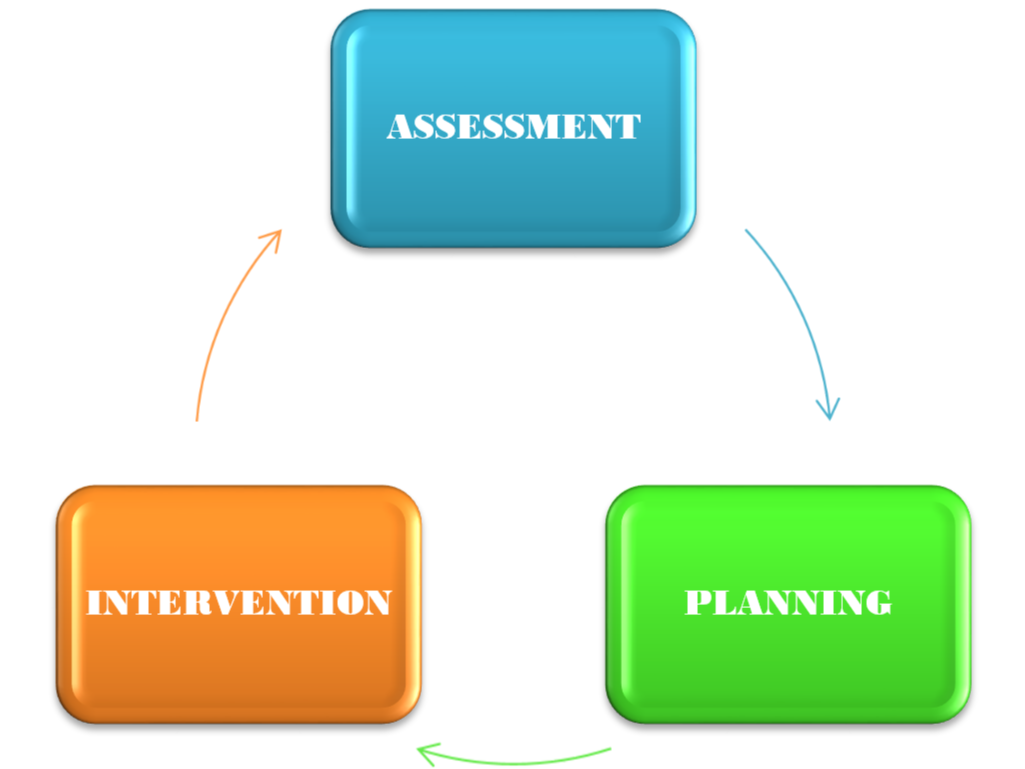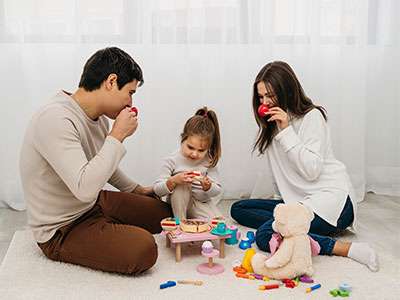Services
Our Professional Services
Occupational therapy is a client-centred health profession concerned with promoting health and well-being through occupation. The primary goal of occupational therapy is to enable people to participate in the activities of everyday life. Occupational therapists achieve this outcome by working with people and communities to enhance their ability to engage in the occupations they want to, need to, or are expected to do, or by modifying the occupation or the environment to better support their occupational engagement. (WFOT 2012).
How Occupational Therapists work:

Assessment:
Assessment includes the use of standardised procedures, interviews, observations in a variety of settings and consultation with significant people in the person’s life.
Planning:
The results of the assessment are the basis of the plan which includes short and long-term aims of treatment.
Intervention:
The intervention focuses on programs that are person-oriented and environmental. These are designed to facilitate the performance of everyday tasks and adaptation of settings in which the person works, lives and socialises
Occupational therapists recognise the importance of teamwork. Cooperation and coordination with other professionals, families, caregivers and volunteers are important in the realisation of the holistic approach.
Ayres defined sensory integration as: The neurological process that organises sensation from one’s own body and from the environment and makes it possible to use the body effectively with the environment.” (1972)
The term “sensory integration” refers to the processing, integration, and organisation of sensory information from the body and the environment.
Simply put, this means how we experience, interpret and react to (or ignore) information coming from our senses. Sensory integration is important in all the things that we need to do on a daily basis, such as getting dressed, eating, moving around, socialising, learning and working.
The terms “sensory integration” and “sensory processing” both refer to the processes in the brain that allow us to take the signals from our senses, make sense of those signals and respond appropriately.
Sensory Information is received from our senses, which include:

- Sight (vision)
- Hearing (auditory system)
- Touch (tactile system)
- Taste (gustatory system)
- Smell (olfactory system)
- Proprioception (senses of body awareness and position)
- Vestibular (awareness of movement, balance, and coordination)
- Interoception (our internal sensory system that tells us what is happening inside our body, for example, hunger, needing the toilet, fatigue, emotions, etc)
Speech therapy is the assessment and treatment of communication problems and speech disorders. It is performed by speech-language pathologists (SLPs), which are often referred to as speech therapists.
Speech therapy techniques are used to improve communication. These include articulation therapy, language intervention activities, and others depending on the type of speech or language disorder.
Why do you need speech therapy?
There are several speech and language disorders that can be treated with speech therapy.
Articulation disorders. An articulation disorder is the inability to properly form certain word sounds. A child with this speech disorder may drop, swap, distort, or add word sounds. An example of distorting a word would be saying “thith” instead of “this”.
Fluency disorders. A fluency disorder affects the flow, speed, and rhythm of speech. Stuttering and cluttering are fluency disorders. A person with stuttering has trouble getting out a sound and may have speech that is blocked or interrupted, or may repeat part of all of a word. A person with cluttering often speaks very fast and merges words together.
Resonance disorders. A resonance disorder occurs when a blockage or obstruction of regular airflow in the nasal or oral cavities alters the vibrations responsible for voice quality. It can also happen if the velopharyngeal valve doesn’t close properly. Resonance disorders are often associated with cleft palate, neurological disorders, and swollen tonsils.
Receptive disorders. A person with receptive language disorder has trouble understanding and processing what others say. This can cause you to seem uninterested when someone is speaking, have trouble following directions, or have a limited vocabulary. Other language disorders, autism, hearing loss, and a head injury can lead to a receptive language disorder.
Expressive disorders. Expressive language disorder is difficulty conveying or expressing information. If you have an expressive disorder, you may have trouble forming accurate sentences, such as using incorrect verb tense. It’s associated with developmental impairments, such as Down syndrome and hearing loss. It can also result from head trauma or a medical condition.
Cognitive-communication disorders. Difficulty communicating because of an injury to the part of the brain that controls your ability to think is referred to as cognitive-communication disorder. It can result in memory issues, problem solving, and difficulty speaking, or listening. It can be caused by biological problems, such abnormal brain development, certain neurological conditions, a brain injury, or stroke.
Aphasia. This is an acquired communication disorder that affects a person’s ability to speak and understand others. It also often affects a person’s ability to read and write. Stroke is the most common cause of aphasia, though other brain disorders can also cause it.
Dysarthria. This condition is characterized by slow or slurred speech due to a weakness or inability to control the muscles used for speech. It’s most commonly caused by nervous system disorders and conditions that cause facial paralysis or throat and tongue weakness, such as multiple sclerosis (MS), amyotrophic lateral sclerosis (ALS), and stroke.
What is social communication?
Some children with ASD face have challenges in communicating their wants and needs. Others may unintentionally be one-sided in their conversations and benefit by working on 2-way communication.
Teaching children with ASD to converse with others in social situations, also called pragmatic communication. Pragmatic language involves skills such as picking up on body language, maintaining eye contact, understanding implied meaning, using normal voice inflection and volume when speaking, maintaining the topic of conversation, and recognizing the interest level of others in what is being discussed. The extent of speech-language therapy varies from one child to the next and depends on the needs of the individual.
The exact services your child requires are determined after evaluation by a speech-language pathologist, often called a speech-language therapist. Therapy itself may be done individually, in a small-group setting, or in a classroom. However, therapy is most effective when it involves everyone—teachers, support staff, families, and even the child’s peers—to encourage the child to practice speech and language skills in a natural setting throughout the day.
It’s important to think of communication as being more than speech, especially because recent studies show that about 30% of individuals with ASD do not gain the skill of verbal speech.
Special education is the practice of educating students in a way that accommodates their individual differences, disabilities, and special needs. Ideally, this process involves the individually planned and systematically monitored arrangement of teaching procedures, adapted equipment and materials, and accessible settings. These interventions are designed to help individuals with special needs achieve a higher level of personal self-sufficiency and success in school and in their community, which may not be available if the student were only given access to a typical classroom education.
Special education aims to provide accommodated education for disabled students such as learning disabilities, learning difficulties (such as dyslexia and ADHD), communication disorders, emotional and behavioral disorders, physical disabilities (such as osteogenesis imperfecta, cerebral palsy, muscular dystrophy, spina bifida, and Friedreich’s ataxia), developmental disabilities (such as autistic spectrum disorder and intellectual disabilities) and other disabilities.[1] Disabled students are likely to benefit from additional educational services such as different approaches to teaching, the use of technology, a specifically adapted teaching area, a resource room, or a separate classroom.
Physiotherapists assess, plan and implement rehabilitative programs that improve or restore human motor functions, maximize movement ability, relieve pain syndromes, and treat or prevent physical challenges associated with injuries, diseases and other impairments.
They apply a broad range of physical therapies and techniques such as movement, ultrasound, heating, laser and other techniques. They may develop and implement programmes for screening and prevention of common physical ailments and disorders.
It helps people with autism to better understand how their actions and reactions are perceived by others.
Applied behavior analysis is a form of behavioral therapy, which is based on traditional psychology. ABA is often used successfully to treat individuals with autism. ABA, however, is not talk therapy; rather it is a carefully structured process wherein an individual is taught skills using rewards to reinforce correct answers or preferred actions. Typically, ABA is provided by therapists with specific ABA training.
Both psychotherapy and other forms of therapeutic interventions are used to improve psychological functioning through behavioral means. These therapies can be completed individually and in groups at both schools and outpatient clinics. Children and parents can participate.
Developmental psychology is a branch of psychology that deals with child development and explores typical and atypical development, questions of nature versus nurture, and related topics. Developmental psychology is the basis for several well-known treatments for autism, including SCERTS, Floortime, and Relationship Development Intervention (RDI).
Some other areas of psychology that are often helpful for people on the spectrum and their families include:
- Drama therapy
- Play therapy
- School/educational psychology
- Family psychology
We Do Treatment For...

Development Disabilities
ADD/ADHD
Asperger Syndrome
Down Syndrome
Dyslexia
Dyscalculia
Dysgraphia

Mental Disabilities
Learning Disability
Memory Loss
Depression

Physical Disabilities
Arthritis in Children
Head Injury
Multiple Sclerosis
Spina Bifida
Muscular Dystrophy
Spinal Muscular Atrophy
Myopathy

Other Disabilities
Daily Habits Problem
Testimonials

"First of all thank you very much the way Dr.Manas guided us and helped us to understand our kids position like what s the problem he is facing and as a parent in which way I am misunderstanding our kid. We have been in Parivartana very short time but benefited a lot ,like treating our kid hyperness,reducing his excitement levels like hand biting, running were came to control and by the therapy sessions going on we are also able to send him to play school..."
